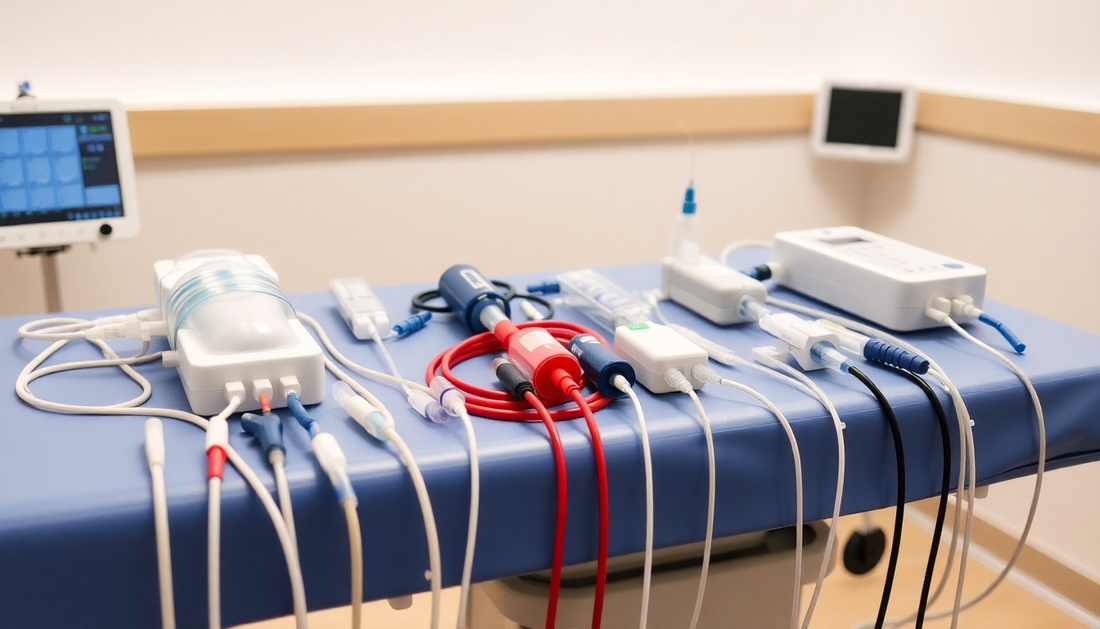
Essential Guide to Central Venous Access Devices: Innovations and Best Practices for 2025
Introduction
Central venous access devices (CVADs) are increasingly becoming indispensable tools in modern healthcare. These devices facilitate the administration of essential treatments, including medications, fluids, blood products, and total parenteral nutrition, directly into the central circulation. As we progress through 2025, understanding the latest innovations and best practices related to CVADs is crucial for healthcare professionals, caregivers, and patients alike.
Understanding Central Venous Access Devices
CVADs are catheters inserted into large veins, usually the internal jugular, subclavian, or femoral veins. They are designed for various clinical applications:
- Administration of Chemotherapy: Patients undergoing cancer treatment often require frequent and prolonged access to the bloodstream for the delivery of chemotherapy agents.
- Long-term Antibiotic Therapy: For patients requiring extended antibiotic courses, CVADs provide a reliable means to deliver medication without the need for repeated needle sticks.
- Dialysis: Patients with renal failure often rely on CVADs for hemodialysis treatments, allowing for efficient blood filtration.
- Parenteral Nutrition: Individuals unable to consume food orally may depend on CVADs for total parenteral nutrition, ensuring they receive necessary nutrients directly into their bloodstream.
Types of Central Venous Access Devices
Several types of CVADs are available, each tailored to specific clinical scenarios:
- Tunneled Catheters: These catheters are inserted under the skin and tunneled through subcutaneous tissue, making them ideal for long-term use in patients requiring ongoing treatment.
- Nontunneled Catheters: Typically used for short-term access, these devices are inserted directly into the vein and are often employed in emergency situations.
- Implantable Ports: These devices are surgically placed under the skin and accessed using a special needle. They are particularly advantageous for patients who require intermittent venous access.
- Peripherally Inserted Central Catheters (PICC): Inserted into peripheral veins and advanced toward the central circulation, PICCs are favored for their ease of insertion and reduced risk of complications.
Innovations in Central Venous Access Devices for 2025
As technology advances, several notable innovations have emerged in the field of CVADs:
- Smart Catheters: These innovative devices come equipped with sensors that monitor vital parameters such as pressure and flow rates, providing real-time data to healthcare providers. This technology can significantly improve patient outcomes by enabling early intervention when issues arise.
- Antimicrobial Coatings: New coatings are being developed to minimize the risk of infections associated with CVADs. These coatings help reduce the likelihood of central line-associated bloodstream infections (CLABSIs), which can complicate patient care.
- Minimally Invasive Insertion Techniques: Advances in ultrasound guidance and robotic-assisted insertion techniques have improved the accuracy of catheter placement, resulting in fewer complications and improved patient safety.
- Biodegradable Catheters: Emerging research is focused on developing biodegradable materials for CVADs, potentially reducing the environmental impact of medical waste while maintaining functionality.
- Telemedicine Integration: With the rise of telehealth, there are new platforms designed to monitor CVADs remotely. This innovation allows for better management of complications and timely interventions.
Best Practices for Central Venous Access in 2025
To ensure optimal outcomes when using CVADs, following established best practices is essential:
- Pre-Insertion Assessment: Conduct thorough assessments, including a detailed patient history and physical examination, to determine the most suitable type of CVAD for each individual. Consider factors such as the patient's medical history, potential for infection, and the duration of treatment.
- Strict Aseptic Technique: Adhere to rigorous infection control protocols during both the insertion and maintenance of CVADs. This includes hand hygiene, the use of sterile gloves, and appropriate barrier precautions.
- Regular Monitoring: Implement a schedule for monitoring the insertion site, device function, and patient symptoms. Early detection of complications, such as catheter occlusion or infection, is crucial for effective patient management.
- Patient Education: Provide comprehensive education to patients and caregivers regarding the proper care and maintenance of CVADs. Empowering patients with knowledge enhances their confidence and compliance, ultimately leading to better health outcomes.
- Documentation and Communication: Maintain clear and detailed documentation regarding catheter insertion, maintenance, and any complications encountered. Effective communication among healthcare team members is essential to ensure continuity of care.
- Post-Insertion Care: Establish protocols for regular dressing changes and flushing of the catheter to prevent clot formation and maintain patency. This includes using a saline flush and heparin if indicated, following institutional protocols.
Challenges and Considerations
While CVADs are invaluable in clinical practice, there are challenges that healthcare providers must navigate:
- Infection Risk: Despite advancements in technology and best practices, the risk of CLABSIs remains a significant concern. Continuous education and adherence to infection control protocols are essential in mitigating this risk.
- Catheter Occlusion: Catheter blockage can occur due to thrombus formation or medication precipitate. Regular flushing and patient monitoring are vital to prevent this complication.
- Patient Comfort: CVADs can be uncomfortable for patients, particularly during insertion. Utilizing appropriate analgesia and sedation techniques can help alleviate discomfort and anxiety.
- Cost Considerations: The use of advanced CVAD technologies may come with increased costs. Healthcare institutions must weigh the benefits of these innovations against budget constraints while ensuring patient safety and quality of care.
Conclusion
As we move through 2025, the landscape of central venous access devices continues to evolve with innovative technologies and improved practices. By staying informed and adhering to best practices, healthcare professionals can enhance patient care and outcomes in the use of CVADs. It is essential for providers to embrace these advancements and prioritize patient safety, comfort, and overall experience. The future of CVADs promises exciting developments that will undoubtedly shape the way we approach venous access and patient management in the years to come.